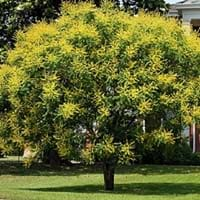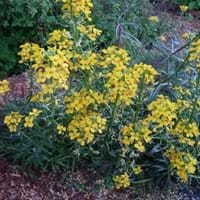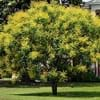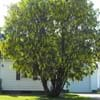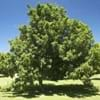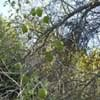Life Span
Perennial
Annual and Perennial
Type
Tree
Tender Perennial
Origin
Southern Asia, Southeastern Asia, China
Southern Europe, Mediterranean
Types
Not Available
Not Available
Habitat
Deciduous forests, Subtropical climates, Tropical regions
gardens, Grassland, Prairies
USDA Hardiness Zone
10-13
7-9
Sunset Zone
H1, H2
4, 5, 6, 14, 15, 16, 17, 18, 19, 20, 21, 22, 23, 24
Habit
Oval or Rounded
Mat-forming
Flower Color
Pink, Light Pink, Lavender, Blue Violet
Pale White, Pale Yellow, Yellow, Yellow green
Flower Color Modifier
Bicolor
Bicolor
Fruit Color
Sandy Brown, Chocolate
Green
Leaf Color in Spring
Green, Light Green
Gray Green
Leaf Color in Summer
Green
Gray Green
Leaf Color in Fall
Red, Green, Copper
Gray Green
Leaf Color in Winter
Red, Copper
Light Green
Leaf Shape
Oval to egg shaped
Linear
Plant Season
Spring, Summer, Fall
Spring, Summer, Fall, Winter
Sunlight
Full Sun, Partial Sun
Full Sun, Partial Sun
Type of Soil
Loam, Sand
Loam, Sand
The pH of Soil
Acidic, Neutral
Neutral, Alkaline
Soil Drainage
Average
Well drained
Bloom Time
Spring, Late Spring, Early Summer, Summer, Late Summer, Early Fall, Fall
Spring, Late Spring, Early Summer, Summer, Late Summer, Early Fall
Tolerances
Wet Site
Drought
Where to Plant?
Ground
Ground
How to Plant?
Seedlings, Spores
Seedlings, Stem Cutting
Plant Maintenance
Low
Medium
Watering Requirements
Average Water Needs
Allow soil to be completely dry in between waterings, Water Deeply, Water less during winter
In Summer
Lots of watering
Lots of watering
In Spring
Moderate
Moderate
In Winter
Average Water
Average Water
Soil pH
Acidic, Neutral
Neutral, Alkaline
Soil Type
Loam, Sand
Loam, Sand
Soil Drainage Capacity
Average
Well drained
Sun Exposure
Full Sun, Partial Sun
Full Sun, Partial Sun
Pruning
Dispose of diseased portions, Prune before Winter, Prune for shortening long shoots
Cut or pinch the stems, Do not prune during shooting season, Prune if you want to improve plant shape, Prune prior to new growth, Remove deadheads
Fertilizers
Apply 10-10-10 amount, as it is a flowering plant, use high phosphorous content fertilizer
No fertilizers needed
Pests and Diseases
Aphids, Bacteria wilt, Downy mildew
fungus, Insects, Red blotch
Plant Tolerance
Heat Tolerance, Shade areas, Shallow soil, Soil Compaction
Drought
Flower Petal Number
Single
Single
Foliage Texture
Coarse
Fine
Foliage Sheen
Glossy
Matte
Attracts
Birds, Butterflies, Hummingbirds
Bees, Birds, Butterflies
Allergy
allergic conjunctivitis, Anxiety, Red eyes, sneezing, Sore eyes
Skin irritation
Aesthetic Uses
Bouquets, Cottage Garden, Showy Purposes
Beautification, Showy Purposes
Beauty Benefits
For treating wrinkles, Hair Conditioner, Making cosmetics
Not Available
Environmental Uses
Air purification, Prevent Soil Erosion, Shadow Tree
Air purification
Medicinal Uses
Detoxification, Hormonal Balancing, Liver problems, Obesity, Regulates Blood Sugar
No Medicinal Use
Part of Plant Used
Leaves
Whole plant
Other Uses
Biomass for fuel, Can be made into a herbal tea, Cosmetics, Making Sweet Scented Oil
Showy Purposes
Used As Indoor Plant
No
No
Used As Outdoor Plant
Yes
Yes
Garden Design
Feature Plant, Shade Trees, Street Trees
Alpine, Container, Edging, Foundation, Groundcover, Mixed Border, Rock Garden / Wall
Botanical Name
LAGERSTROEMIA speciosa
Erysimum franciscanum
Common Name
Pride-of-India, Queen's crape-myrtle,
Franciscan wallflower, San Francisco wallflower
In Hindi
जरुल
Franciscan wallflower
In German
Königinblume
Franziskaner Mauerblümchen
In French
lilas des Indes, Lagerstroemia speciosa
wallflower franciscaine
In Spanish
Banabá Plant
alhelí franciscana
In Greek
Lagerstroemia speciosa
Φραγκισκανών wallflower
In Portuguese
Resedá-gigante
wallflower Franciscan
In Polish
Lagerstremia wspaniała
wallflower Franciszkanów
In Latin
Lagerstroemia speciosa
Francisci Wallflower
Phylum
Magnoliophyta
Magnoliophyta
Class
Magnoliopsida
Magnoliopsida
Order
Myrtales
Brassicales
Family
Lythraceae
Brassicaceae
Genus
Lagerstroemia
Erysimum
Clade
Angiosperms, Rosids
Angiosperms, Eudicots, Rosids
Tribe
Not Available
Not Available
Subfamily
Not Available
Not Available
Number of Species
Not Available
Not Available
Importance of Pride of India and Franciscan Wallflower
Want to have the most appropriate plant for your garden? You might want to know the importance of Pride of India and Franciscan Wallflower. Basically, these two plants vary in many aspects. Compare Pride of India and Franciscan Wallflower as they differ in many characteristics such as their life, care, benefits, facts, etc. Every gardener must at least have the slightest clue about the plants he wants to plant in his garden. Compare their benefits, which differ in many ways like facts and uses. The medicinal use of Pride of India is Detoxification, Hormonal Balancing, Liver problems, Obesity and Regulates Blood Sugar whereas of Franciscan Wallflower is No Medicinal Use. Pride of India has beauty benefits as follows: For treating wrinkles, Hair Conditioner and Making cosmetics while Franciscan Wallflower has beauty benefits as follows: For treating wrinkles, Hair Conditioner and Making cosmetics.
Compare Facts of Pride of India vs Franciscan Wallflower
How to choose the best garden plant for your garden depending upon its facts? Here garden plant comparison will help you to solve this query. Compare the facts of Pride of India vs Franciscan Wallflower and know which one to choose. As garden plants have benefits and other uses, allergy is also a major drawback of plants for some people. Allergic reactions of Pride of India are allergic conjunctivitis, Anxiety, Red eyes, sneezing and Sore eyes whereas of Franciscan Wallflower have Skin irritation respectively. Having a fruit bearing plant in your garden can be a plus point of your garden. Pride of India has no showy fruits and Franciscan Wallflower has no showy fruits. Also Pride of India is not flowering and Franciscan Wallflower is not flowering . You can compare Pride of India and Franciscan Wallflower facts and facts of other plants too.
